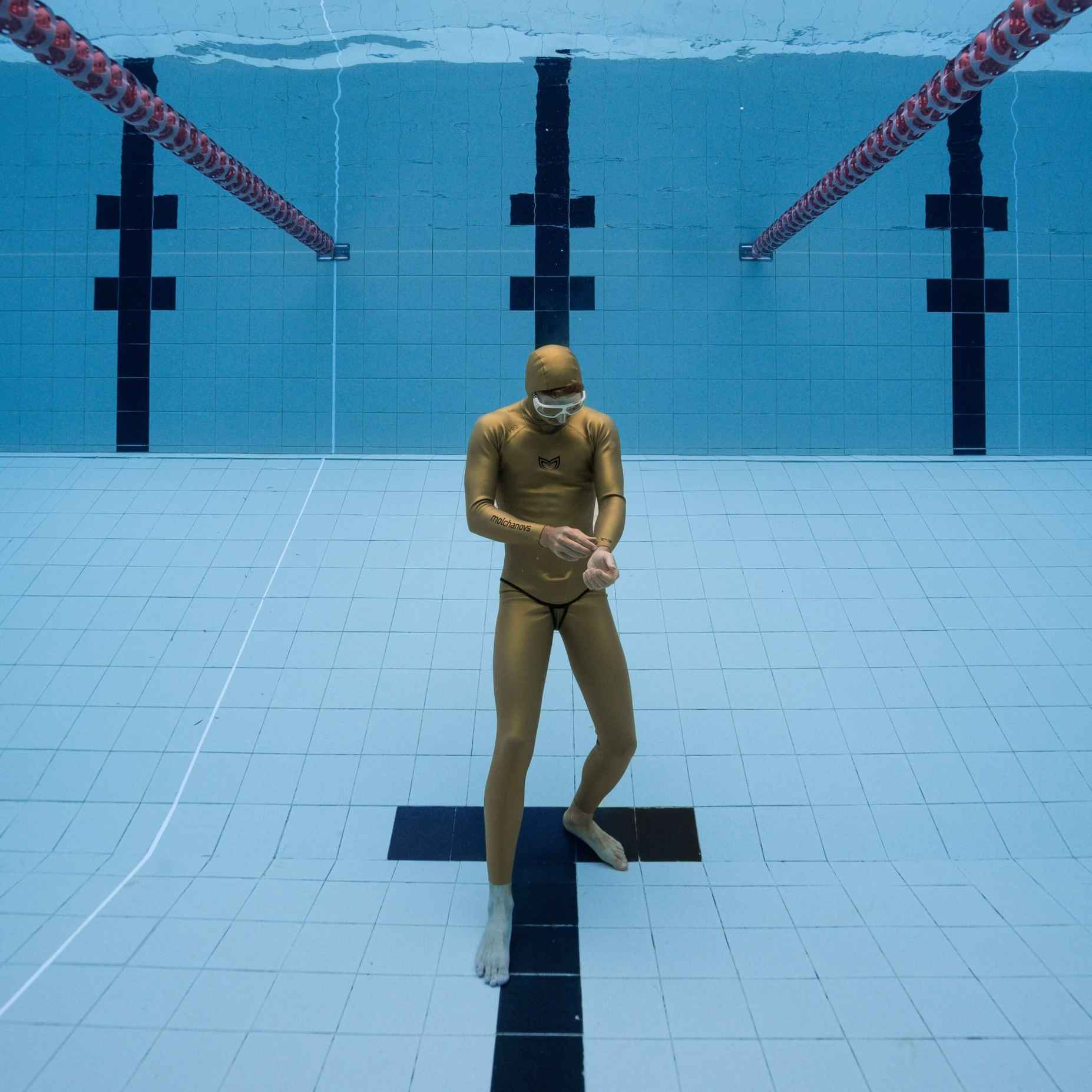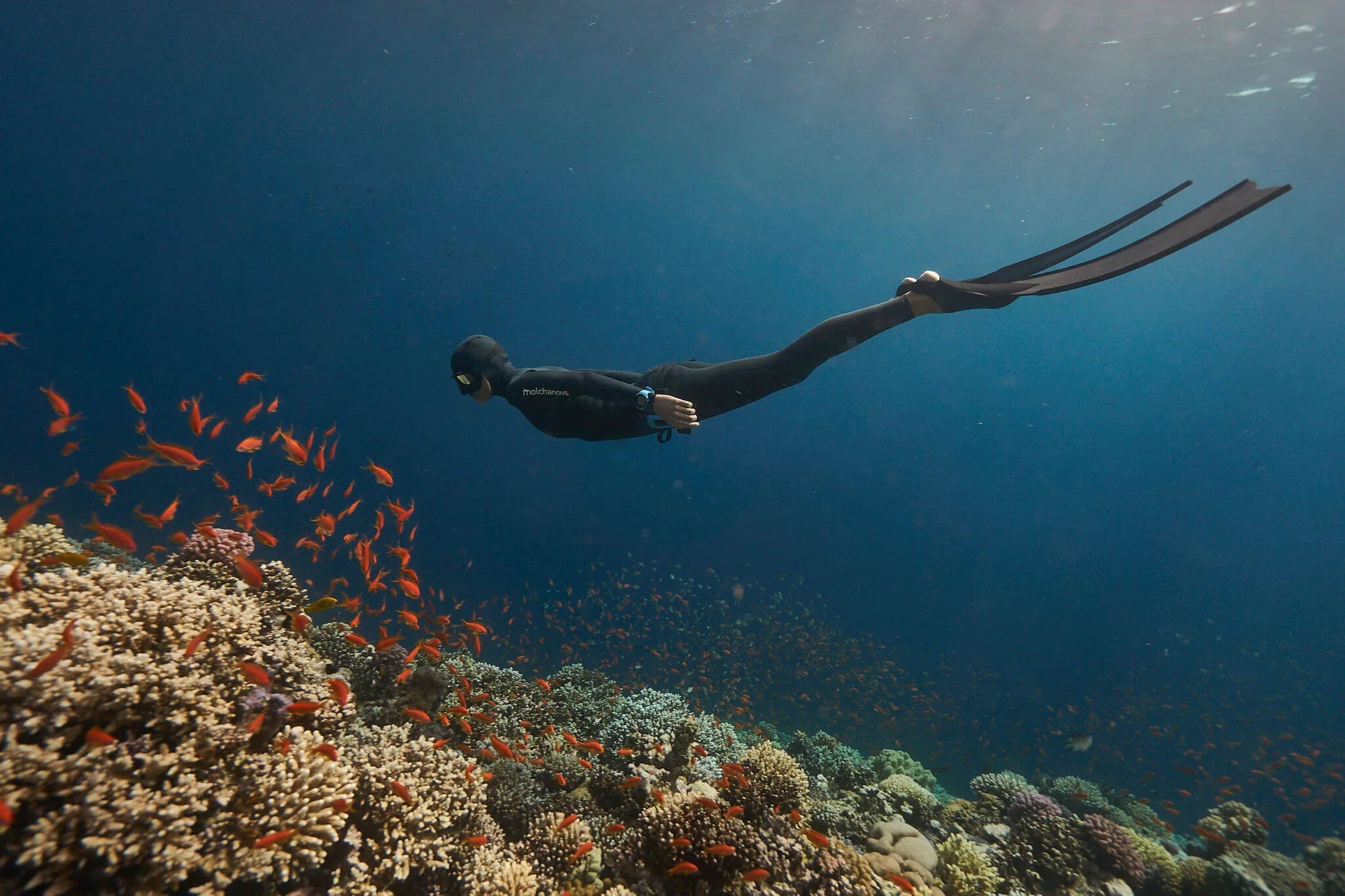Shop Freediving Wetsuits
Shop Freediving Wetsuits
Freediving Wetsuit FAQs
The way you put on and take off a wetsuit depends on the inner material. If you have a fabric-lined interior, it’s possible to put on dry; however, an open cell interior needs to be put on in water or with the help of a lubricant. The same applies to removing a wetsuit. For detailed instructions and accompanying videos on how to put on and take off a wetsuit, check out How to Put On and Take Off a Wetsuit.
Freediving Wetsuit Care Instructions
After diving
- Directly after diving, thoroughly rinse your wetsuit in fresh water. If you can’t rinse it right away, leave it in a bag with some seawater—don’t let salt water dry on it.
- After rinsing, leave the wetsuit to air dry in the shade. Don’t dry it in the sun, near a fire, near a central heating system, or in a clothes dryer.
Deep-cleaning a wetsuit
- From time to time, wash your wetsuit with a wetsuit-specific shampoo and follow the directions closely. Remove grease, oil, and other stains with a wetsuit-specific degreaser. Never use petroleum products on your wetsuit or place in a washing machine.
Storing a wetsuit
- Store your dry wetsuit in a cool, dry place and avoid folding it for excessive periods.
- Folding a wetsuit for short-term transport is acceptable—for long-term storage, lay it flat or hang it on a hanger that doesn’t stretch out the wetsuit. Avoid storing in direct sunlight or close to heat sources.
Repairing a wetsuit
- If you tear your wetsuit, use Neoprene Cement (available at most diving centers or watersports stores) to repair it. Follow the instructions carefully.
- Never sew smooth skin seams. Fabric-finished surfaces can be loop stitched, but avoid stitching completely through to the opposite side.
- If you need advice on repairing your wetsuit, contact us by email at info@molchanovs.com—we're happy to help you.
Additional Care for PRO Wetsuits
- Because of the high-quality performance materials used in PRO wetsuits, you must be extra careful when putting on and taking off the wetsuit.
- We don’t recommend wearing PRO wetsuits for extended periods in direct sunlight. If you must, we recommend wearing a protective fabric T-shirt over the wetsuit to shield the glide skin layer from the sun.
For standard sizes, check the wetsuit’s product page for the sizing chart and choose the size closest to your measurements. If you want to take a step further and order a custom-sized wetsuit, click here to see how to accurately take your measurements.
Every freediver is different when it comes to how quickly they lose heat and start to feel cold in the water. You can use the temperatures and wetsuit thicknesses below as a general recommendation for a 1-hour freediving session:
28°C (82°F) and warmer: 1 - 1.5mm
24 - 28°C (75 - 82°F): 3mm
18 - 24°C (64 - 75°F): 5mm
16 - 17°C (61 - 63°F) and colder: 7mm
Get cold easily?
If you feel chilly quicker than others in the water, choose a wetsuit thickness based on the higher temperature in each of the ranges above. Consider purchasing a wetsuit with an open cell interior, which clings to your skin and minimizes water circulation, keeping you warmer longer. Important note: Open cell wetsuits must be put on in water or with lubricant.
For your time out of the water wearing a wet wetsuit, note that wetsuits with a fabric-lined exterior will feel cooler in windy weather as water evaporates from its surface.







